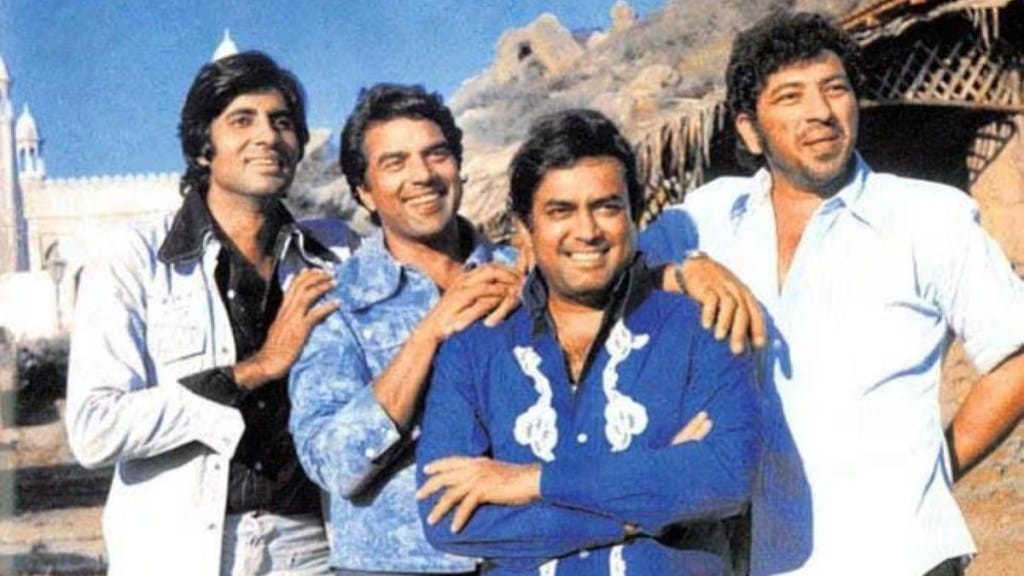Two months into the Emergency in 1975, theatres in India featured Ramesh Sippy’s Sholay on August 15. The air in India was already heavy with tension. The nation’s mood was one of political unrest and social unease. The film did not only redefine Hindi cinema but also captured the angst, resilience and spirit of the times.
Half a century later, Sholay remains an untouchable classic. Its dialogues are still part of everyday conversations, its characters are cultural icons and its music, costumes and one-liners have passed the sands of time seamlessly. While the film is known for several records it made and broke during its theatrical run at the time, Sholay redefined the business of box office in India of that time.
Highest grossing film of its time
With a dream cast of Dharmendra, Amitabh Bachchan, Amjad Khan, Sanjeev Kumar, Hema Malini and Jaya Bachchan, Sippy’s magnum opus was India’s first 70mm widescreen release with stereophonic sound. And well, the ambition matched the scale. The film started with an initial budget of Rs 1 crore which later ballooned to Rs 3 crore. It became the most expensive film India had ever seen.
And yet, on release, Sholay was labelled a flop. Critics were dismissive and audiences lukewarm. In a docu-series about the writers of Sholay — Salim Khan and Javed Akhtar (popularly known as Salim-Javed) — ‘Angry Young Men’, Akhtar recalled, “On the third day, GP Sippy, Ramesh Sippy and Amitabh Bachchan came to my house saying the film had bombed. They wanted to rewrite and reshoot scenes. Salim saheb and I told them that this film can’t fail!”
Salim-Javed were proved wrong
The writer duo was so confident about the movie that they even took out full-page ads declaring that Sholay would earn Rs 1 crore per territory, double the record at the time. However, Salim-Javed were proved wrong.
The film ended up earning over Rs 3 crore per territory, selling around 15 crore tickets in India during its first six years. Sholay didn’t just change the box office game, it rewrote the rules. It proved that large-scale productions with gripping narratives could enjoy extended theatrical runs, paving the way for the “event film” culture Bollywood thrives on today.
The film also rewrote the charts. Smashing the record held by Mughal-e-Azam, Sholay reportedly raked in an astonishing Rs 35 crore worldwide, a figure unheard of in 1975 and held the title of India’s highest-grossing film for nearly two decades. The Sooraj Barjatya directorial Hum Aapke Hain Koun..! finally dethroned Sholay in 1994.
Its success was nothing short of cinematic legend – 60 golden jubilees (50 weeks in a single theatre) and over 100 silver jubilees (25 weeks) across the country, a feat unmatched until Dilwale Dulhania Le Jayenge arrived in 1995.
A spaghetti Western set in Ramgarh
At its heart, Sholay was an Indian reimagining of the spaghetti Western — Jai and Veeru, two petty criminals, hired by the stoic Thakur Baldev Singh to capture the ruthless Gabbar Singh. But beyond the plot, it was about friendship, sacrifice, courage and justice. These themes are as resonant now as they were in 1975.
